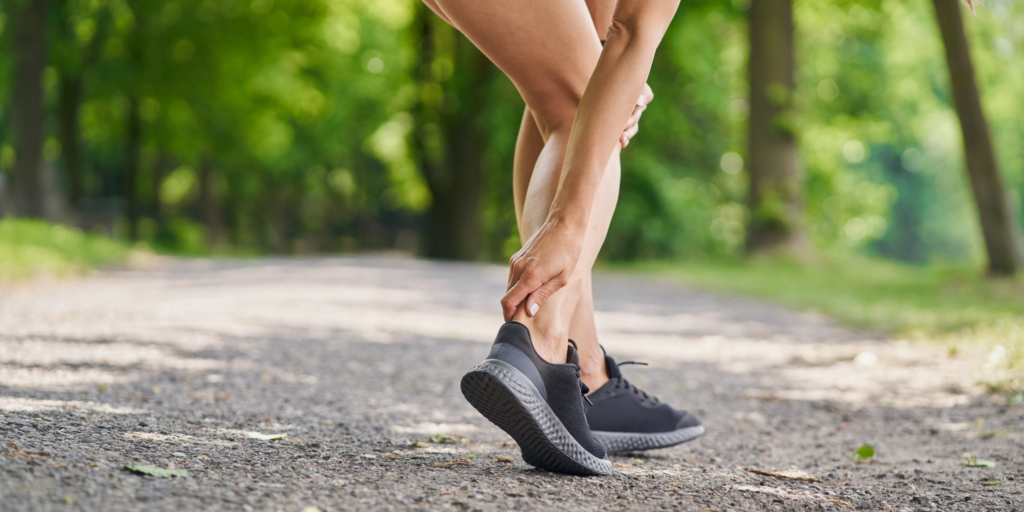The Achilles tendon connects your calf muscle to the calcaneus bone in the foot and plays a crucial role in fast-paced movements. The tendon can become irritated when exposed to excessive or new loads such as running faster or further than usual. Achilles tendinopathy typically causes very localised pain directly on the tendon. This is most often in the mid-portion of the achilles, a condition known as ‘mid-portion’ achilles tendinopathy. The good news is that there are many effective ways to help you recover from this condition.

Stage 1: Isometrics for Achilles Tendinopathy Recovery
Isometric exercises are an ideal starting point to manage achilles tendon pain and rebuild strength without overstraining the tendon. These exercises apply a steady load that helps the tendon handle stress better over time. Let’s explore the essential isometric exercises to begin your recovery.
1. Seated Heel Raise
- Start position: Sit on a chair with feet flat. Place your hands on your knees for stability
- Movement: Rise your heel off the ground until you are on your toes. Mid-height is a good position to start. Hold this position for up to 45 seconds. Avoid excessive strain.
- Sets & Reps: 2 sets of 45 seconds holds. 1-2 minute rest between sets.
- Progression: Add weight by holding a dumbbell on your knee. If you are a gym you can complete this on a seated calf raise machine or with a smith machine bar on the knee.
2. Standing Heel Raise
- Start position: Stand with your feet hip-width apart. You can lightly rest your hands on a wall or chair for balance.
- Movement: Slowly lift your heel off the ground. Hold a mid-height position for up to 45secs.
- Sets & Reps: 2 sets of 45 seconds holds. 1-2 minute rest between sets.
- Progression: Add weight by holding a dumbbell in one hand. If you are a gym you can complete this on a standing calf raise machine or with a smith machine bar across the back of the shoulders. You can also progress the exercise by completing this one-leg at a time.
3. Soleus Wall Sit
- Start position: Stand with your back against a wall and your feet a comfortable distance out in front. Knees are slightly bent.
- Movement: Slide down the wall into a semi-squat position. Once at a comfortable depth raise your heels off the ground. Hold this position 30 seconds.
- Sets & Reps: Complete 5-6 reps of 30secs. 1 minute rest between holds.
- Progression: Increase the hold time to 45 seconds, elevate your heels higher or progress to a single leg hold.
4. Foam Roller
- Start position: Lying on the ground place the foam roller under one or both calves.
- Movement: Slide your legs, using your upper body, along the foam roller. Aim to roll over as much of your calf region as you can during the exercise.
- Duration: Complete for 2-3 minutes or as long as it takes to roll over the full length and width of the calf.
5. No stretching
It can feel like the achilles needs to be stretched with the typical standing calf stretches. Don’t be tempted. Achilles tendinopathy is typically not related to reduced calf length. Instead of the typical standing calf stretches grab a foam roller and complete the exercise outlined in number 4 above.
Stage 2
The isometric exercises above lay a solid foundation for improving achilles tendinopathy pain. Isometric exercises are great at helping improve load tolerance and are best used as part of a progressive loading program. This will ensure your achilles tendon is progressed through all the steps that it is required to do. In Stage 2, we’ll introduce slow strengthening exercises for hypertrophy.